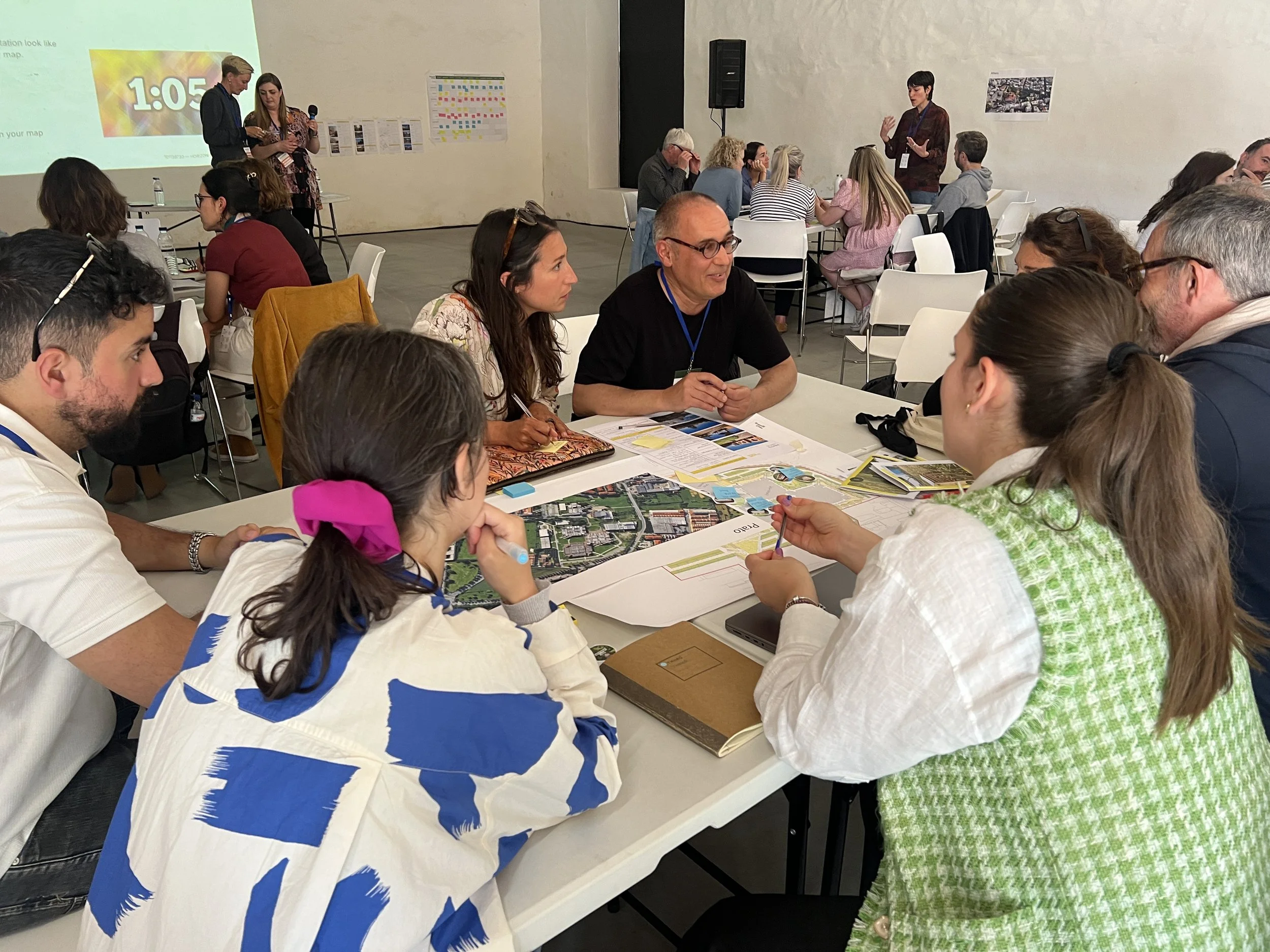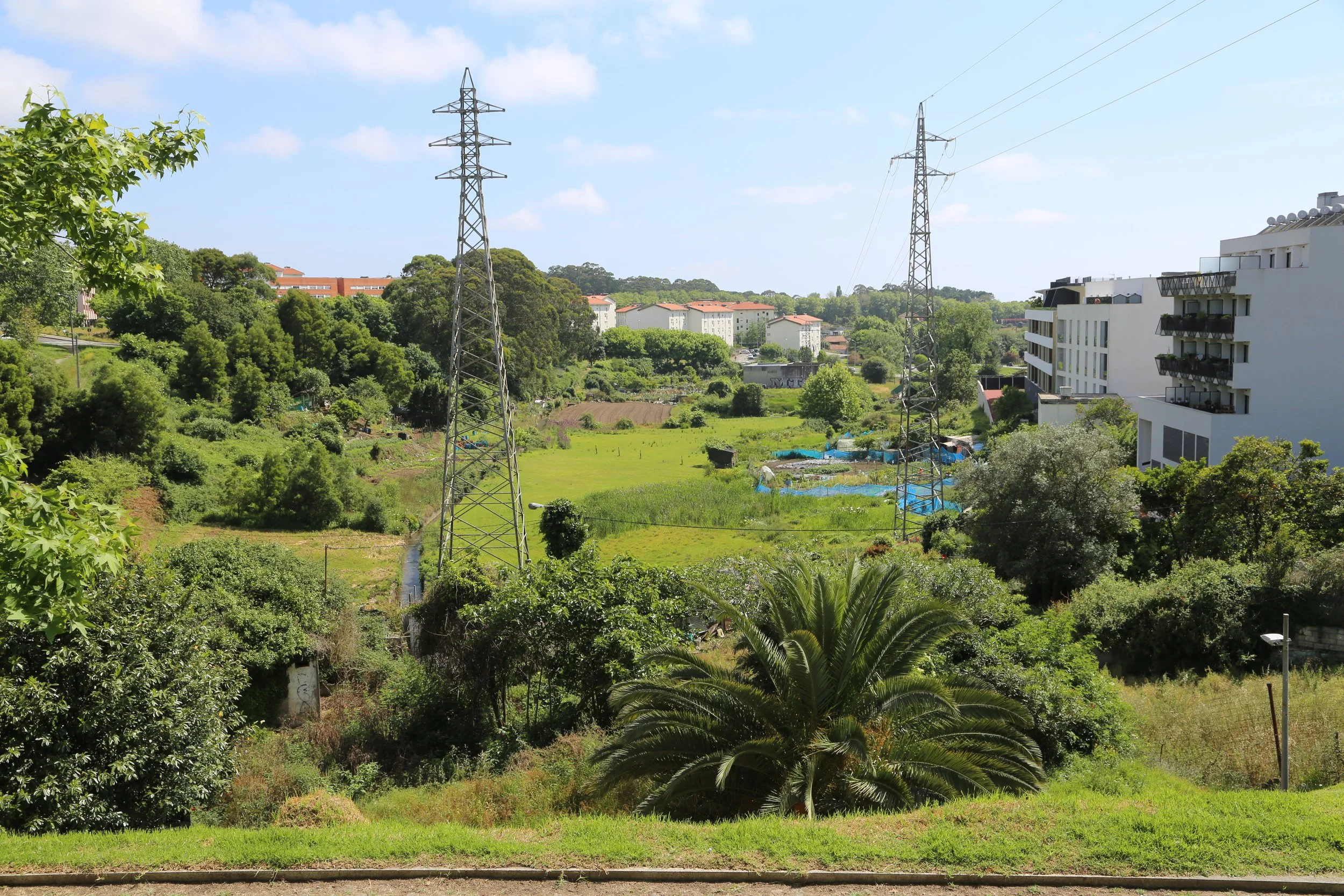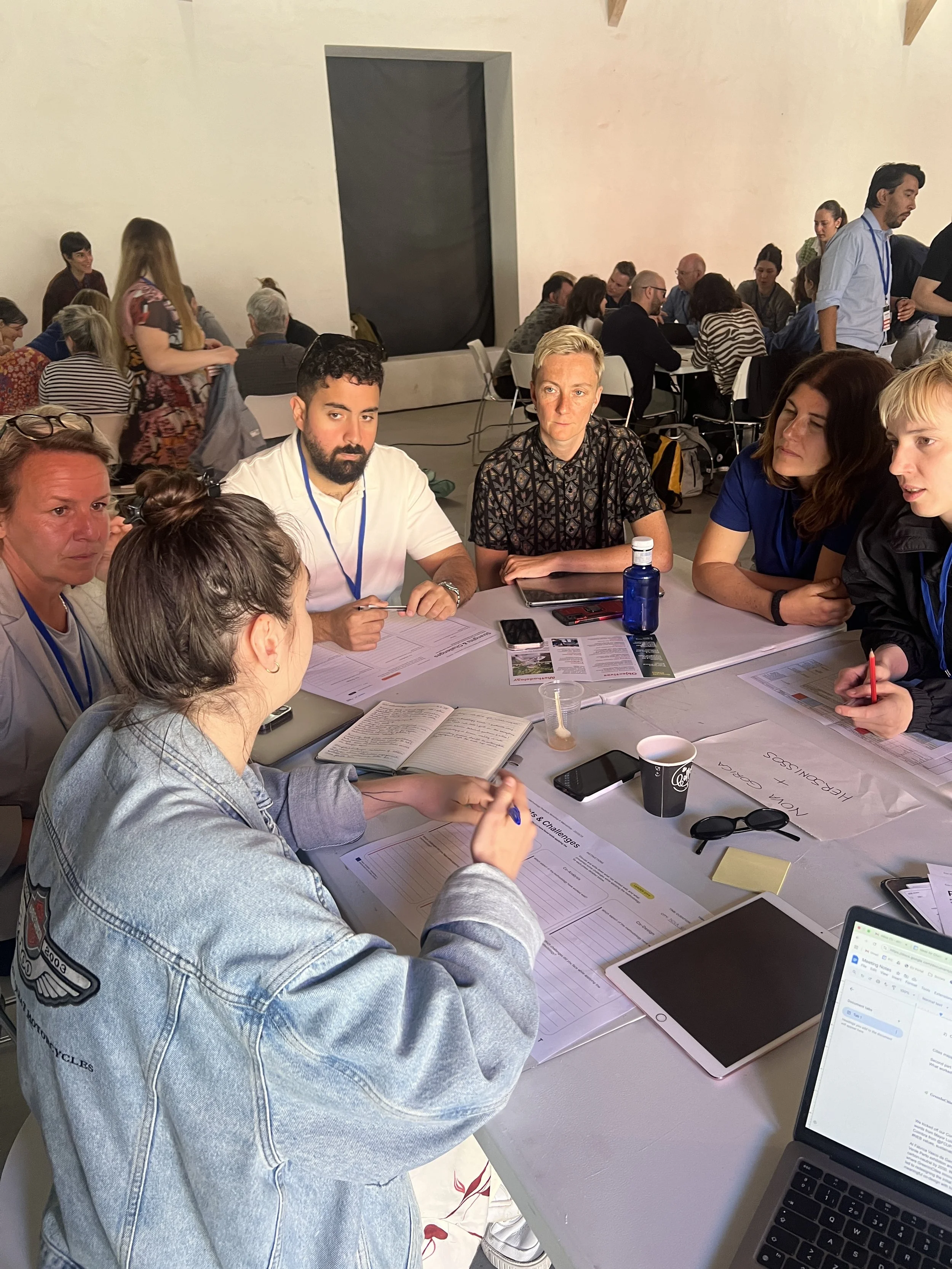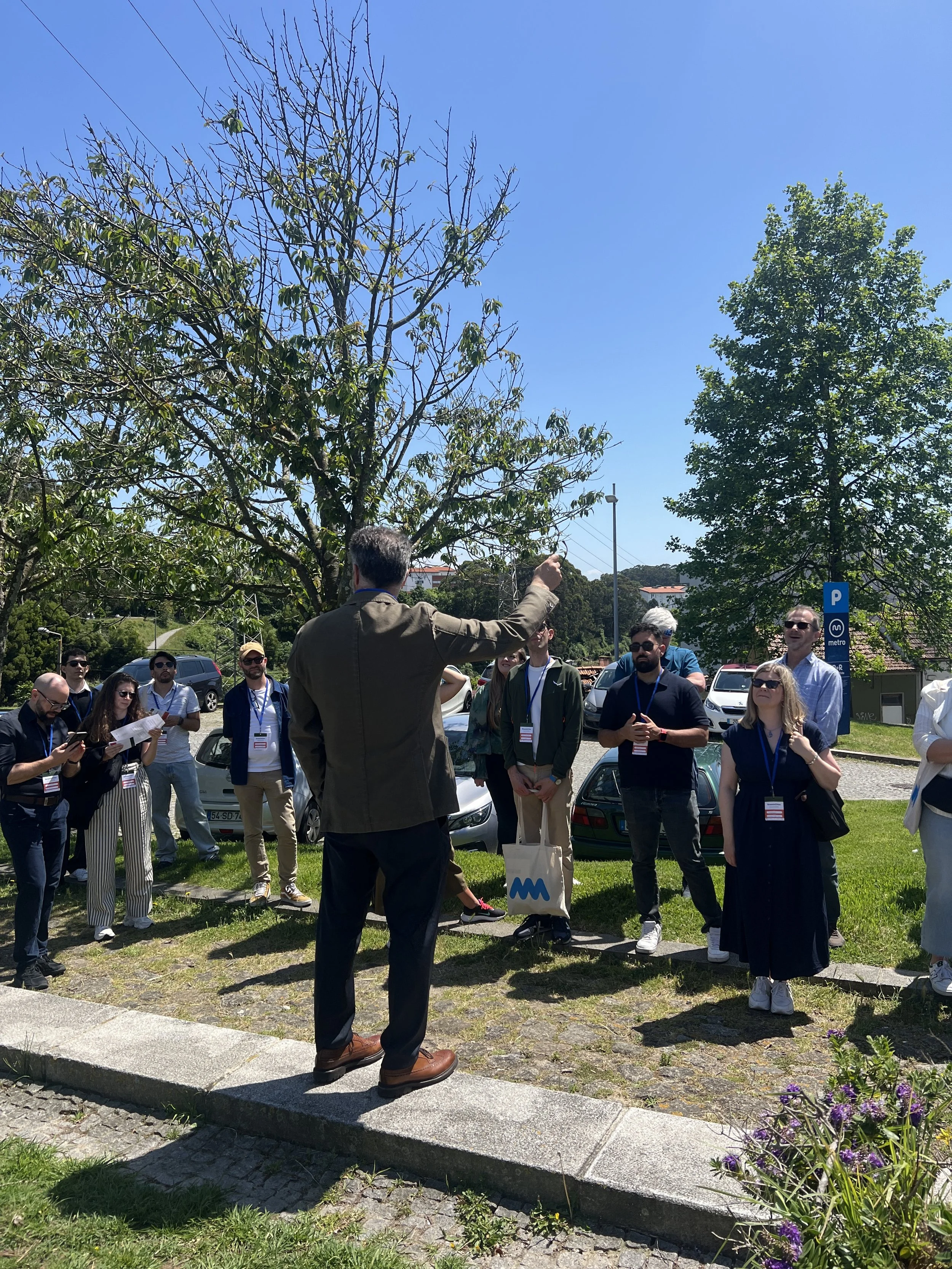From Ideas to Action: What We Learned in Matosinhos
Insights from GreenInCities' Consortium Meeting in Matosinhos
Earlier this month, the GreenInCities consortium gathered in Matosinhos (Portugal) for a three-day meeting that marked a turning point for our project. More than 60 participants, representing over 30 partner organisations, came together to take stock of the journey so far and chart the road ahead. Hosted by University of Porto and Câmara Municipal de Matosinhos, the event provided an invaluable opportunity to reflect, reconnect, and reinvigorate our shared mission: to co-create greener, more inclusive, and climate-resilient urban spaces across Europe..
Day 1: Shifts, and Shared Strategies
Day one in Matosinhos set the stage for focused reflection and shared ambition. We opened with updates from the Leader Cities, Barcelona, Athens, Helsinki, Nova Gorica, and Prato, showcasing their co-analysis findings through diverse methods like emotional mapping, biodiversity co-mapping, and neuroscience-based assessments. Each city offered a unique glimpse into how social, ecological, and climatic challenges intersect in their urban contexts.
The Barcelona team, led by Institute of Advanced Architecture of Barcelona (IAAC) and Pla Estratègic Metropolità de Barcelona (PEMB), presented a compelling case for treating nature as a stakeholder. At the mouth of the Besòs River, in the municipality of Sant Adrià de Besòs, community co-design sessions—particularly with children and families—led to a shift in priorities: placing vegetation closer to the riverbed and adapting plant layers to balance ecological goals with public safety. Nature was prioritised over pedestrian walkways, reversing the original intervention plan, which had focused primarily on human-centred circulation.
To create a habitat suitable for local fauna, a three-tiered planting strategy was proposed: tall species near the river, followed by medium and ground-level vegetation. However, this configuration raised safety concerns, particularly regarding visibility. As a result, the medium and ground-level layers were rearranged in response to a thoughtful negotiation between human and non-human needs.
Later, LAND presented the outcomes of the Re-naturing Matrix, a decision-support tool developed to help cities align local planning gaps with European climate objectives. Tested across all Leader Cities, the matrix connects specific urban challenges, such as biodiversity loss, pollution, or climate preparedness, to over 40 indicators and related GreenInCities tools. The presentation illustrated how the matrix can guide cities through strategy selection, KPI alignment, and long-term monitoring. Conversations sparked around its operability, future scalability, and how to ensure cities can continue using and updating it beyond the project’s lifecycle.
Parque de Real; Matosinhos’ intervention site
The day concluded with a visit to Parque de Real, where FCUP and Câmara Municipal de Matosinhos are spearheading the renaturalisation of the Riguinha stream. The site presents a number of complex challenges: a fragmented urban fabric with disconnected areas, varying topography, proximity to flood-prone zones, and a mix of public and private residential buildings, many of them social housing. The area is also marked by socio-economically vulnerable communities and the presence of both formal and informal allotments, which add further layers of spatial and legal complexity.
Once constrained by concrete walls, the Riguinha stream is now at the centre of a transformative vision. The plan aims to re-establish it as a resilient and biodiverse green corridor, reconnecting ecosystems and communities alike—an inspiring local embodiment of the values and strategies we’re working to scale across Europe.
“Nature was prioritised over pedestrian walkways, reversing the original intervention plan, which had focused primarily on human-centred circulation.”
Sharing, Adapting, and Innovating: Insights from Days 2 and 3
The second and third days of the Matosinhos meeting highlighted the collective intelligence and adaptability of the GreenInCities community. We began with a Co-Creation Methodology Feedback Workshop led by THINGS, where leader and follower cities openly shared their journeys through the co-analysis and co-design phases. Cities mapped their progress across stages—like stakeholder mapping, data collection, ideation, and solution definition—while also surfacing honest challenges: difficulties in communicating tools, engaging sceptical stakeholders, or navigating the sheer number of available resources. Yet, cities also celebrated successes, such as inclusive co-design sessions, strong youth engagement, and creative adaptation of methodologies to local contexts. The takeaway was clear: while the methodology is flexible and user-friendly, implementation requires time, persistence, and often, additional funding.
Later, during the Twinning Workshop facilitated by FCUP, cities pitched their pilot profiles and found common ground in challenges like climate resilience, community inclusion, and biodiversity loss. Through this dialogue, promising twinning pairs emerged, setting the foundation for deeper collaboration across cities that share social, ecological, or governance similarities.
“The takeaway was clear: while the methodology is flexible and user-friendly, implementation requires time, persistence, and often, additional funding.”
The Solutions Workshop, co-led by ABUD and IAAC, took this further by inviting cities to explore how intangible green practices—like community composting, animal-inclusive design, or educational gardens—could be adapted and scaled. Each city brought its own nuance: Athens discussed strategies for managing urban stray cat populations, Nova Gorica explored turning its park into a fully edible landscape, and Barcelona debated how to integrate micro-ecosystems into dense urban settings. Across the board, cities were reminded once and again to ask: How will this solution interact with local nature?
In the Community of Practice and Synergies Workshop, hosted by Fab Lab Reykjavik and Fab City Foundation, participants used a playful yet strategic approach to reimagine stakeholder constellations. Through cards representing problems, elements, and solutions, they prototyped collaborative interventions and mapped out thematic clusters around inclusivity, digital infrastructure, and green policy. These conversations laid the ground for upcoming deliverables on upscaling and replication, strengthening the GreenInCities community as a lasting ecosystem of innovation.
Day 3 began with a preview of the Data Marketplace developed by Sensative and IES Lt., which will centralise project data in a user-friendly, searchable dashboard. The platform will host solution cards, datasets, visual documentation, and live sensor feeds, making GreenInCities' data accessible, transparent, and usable well beyond the project’s lifecycle.
“How can we ensure marginalised groups—and non-human stakeholders—are represented in our evaluation frameworks?”
This was followed by a hands-on Monitoring and Ex-Ante Evaluation Workshop led by MCRIT, where cities discussed how to refine their impact assessments. From emoji-based emotional mapping with children to biodiversity co-mapping and environmental sensing, cities are combining qualitative and quantitative methods to create baselines that will later help assess real change. The session also opened delicate but important discussions about inclusivity and identity: what kind of demographic questions are acceptable or relevant in different cultural contexts? How can we ensure marginalised groups—and non-human stakeholders—are represented in our evaluation frameworks?
Finally, the Innovation Management Workshop hosted by IAAC brought everything together by identifying Key Exploitable Innovations (KEIs). Cities and partners reflected on what truly constitutes innovation, beyond just tools or technology, and how to ensure these ideas are validated, tested, and made transferable. Highlights included Reykjavik’s use of local waste to restore topsoil, Neurolandscape’s neuroscience-based design approach, and Barcelona’s use of digital twins for participatory simulation. The discussion reinforced that innovation can be social, ecological, or procedural,and that Nature-based Solutions must also evolve in how they're governed, communicated, and measured.
In her closing remarks, Chiara Farinea, project coordinator, reminded us that the coming months will be pivotal: as participatory processes shift from exploration to decision-making, the project is entering a new and exciting phase—the implementation of solutions. Co-created interventions will soon take shape on the ground, and cities will begin translating shared knowledge into tangible transformation. Our collective challenge now is to ensure that each step forward centres not only on citizens, but on the ecosystems we are part of, honouring nature as a stakeholder and sustaining the collaborative spirit that defines GreenInCities.
GreenInCities’ partners at Casa da Architectura





